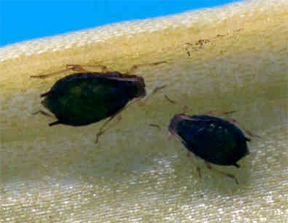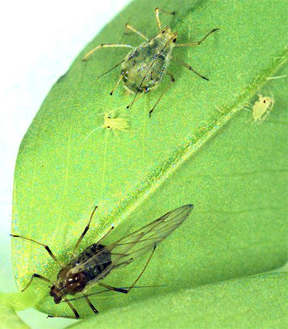Aphids: Little green cows of the bug world
Editor’s note: This article is from the archives of the MSU Crop Advisory Team Alerts. Check the label of any pesticide referenced to ensure your use is included.
In our last conference call, our MSU Extension educators reported lots of phone calls about aphids on flowers and in the garden. Although aphids don’t usually cause much damage, large numbers may cause some distortion of the leaves, yellowing or slow plant growth. Usually aphids are kept under control by a host of natural enemies: ladybird beetles, lacewing larvae and small parasitic wasps that deposit their eggs inside the aphids.
However, there are two situations that may lead to an abundance of aphids. First, if an insecticide was used about four to six weeks earlier, it may have eliminated most of the natural enemies. Because aphids reproduce rapidly (one generation in less than seven days in warm weather), populations may grow fast after the natural enemies are gone. Secondly, the aphids may be protected by ants. Many species of ants will tend aphids to collect the honeydew droplets (sweet nectar-like excretions) excreted by the aphids. If ants are tending the aphids, they will ward off potential predators to protect their “cows.”
If aphids are causing plant injury, you may want to spray infested plants with a solution of 1 percent insecticidal soap. Spray with as much intensity as you can without injuring plants, to dislodge the aphids. Avoid exceeding the label rate for insecticidal soaps because the soap can injure plant leaves, especially flowers.
Finally, and as a last option, you can spray a pyrethroid insecticide (resmethrin, permethrin, cyfluthrin, and others). This will kill the aphids and predators. But watch plants sprayed with a pyrethroid insecticide later this summer. They may be back in four to six weeks.

Aphids on a lily leaf (less than 1/16 inch-long).

Adult aphid in winged-form and in the more
typical wingless form (1/8 inch-long) and two
young aphids.
Dr. Smitley's work is funded in part by MSU's AgBioResearch.



 Print
Print Email
Email


